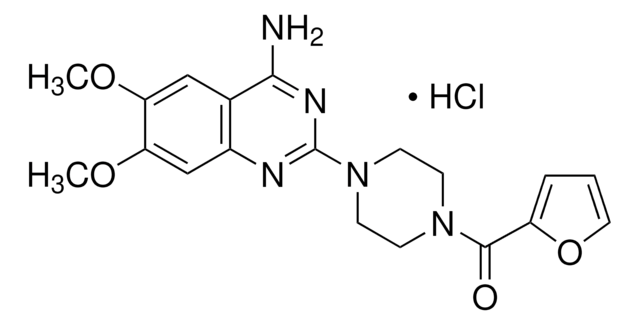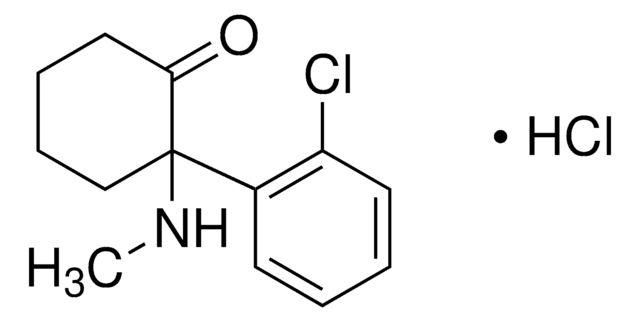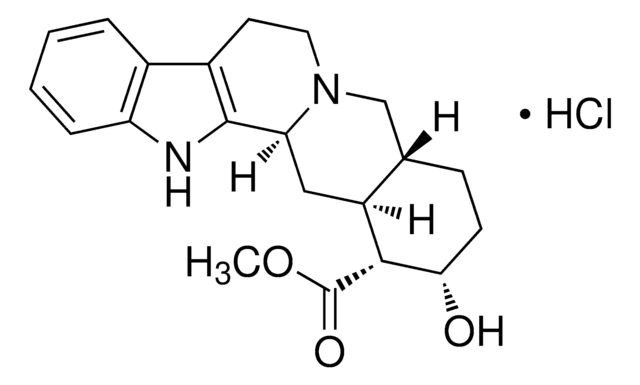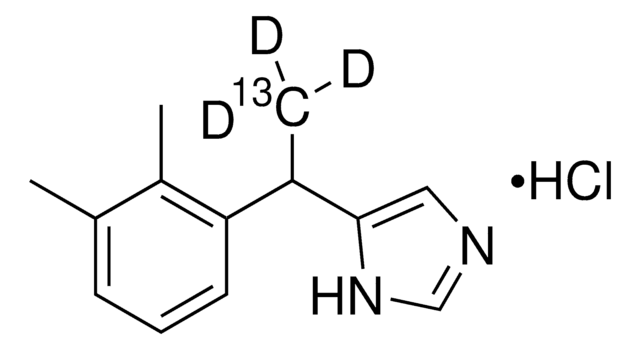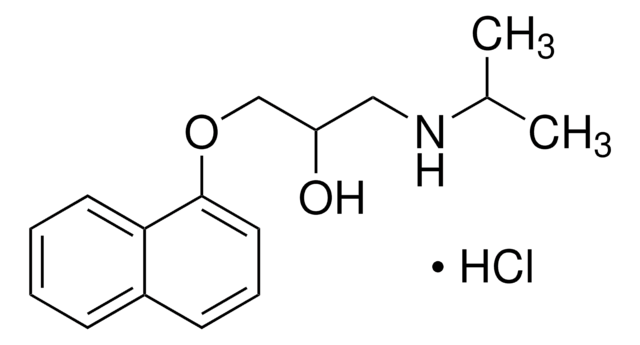Kluczowe dokumenty
A9611
Atipamezole
≥98% (HPLC)
Synonim(y):
4-(2-Ethyl-2,3-dihydro-1H-inden-2-yl)-1H-Imidazole, Antisedan, MPV 1248
About This Item
Polecane produkty
Próba
≥98% (HPLC)
Formularz
powder
kolor
white to brown
rozpuszczalność
DMSO: ≥30 mg/mL
temp. przechowywania
room temp
ciąg SMILES
CCC1(Cc2ccccc2C1)c3c[nH]cn3
InChI
1S/C14H16N2/c1-2-14(13-9-15-10-16-13)7-11-5-3-4-6-12(11)8-14/h3-6,9-10H,2,7-8H2,1H3,(H,15,16)
Klucz InChI
HSWPZIDYAHLZDD-UHFFFAOYSA-N
Opis ogólny
Zastosowanie
Działania biochem./fizjol.
Cechy i korzyści
Kod klasy składowania
11 - Combustible Solids
Klasa zagrożenia wodnego (WGK)
WGK 3
Temperatura zapłonu (°F)
Not applicable
Temperatura zapłonu (°C)
Not applicable
Wybierz jedną z najnowszych wersji:
Masz już ten produkt?
Dokumenty związane z niedawno zakupionymi produktami zostały zamieszczone w Bibliotece dokumentów.
Produkty
α2-Adrenoceptors
Dowiedz się więcej o receptorze alfa-2 adrenergicznym i jego podtypach, pośredniczonych reakcjach i zastosowaniach agonistów. Zawiera listę dostępnych produktów i tabelę porównawczą.
Nasz zespół naukowców ma doświadczenie we wszystkich obszarach badań, w tym w naukach przyrodniczych, materiałoznawstwie, syntezie chemicznej, chromatografii, analityce i wielu innych dziedzinach.
Skontaktuj się z zespołem ds. pomocy technicznej

